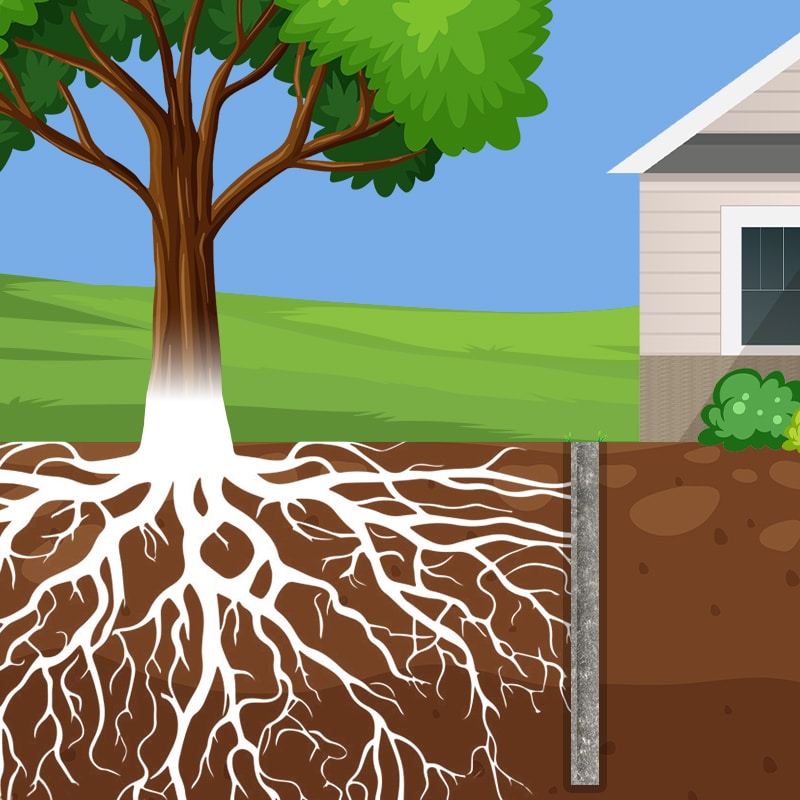
01 May What Is a Tree Root Barrier?
We all love having trees around us, and in urban areas, they can have a positive impact on both physical and mental health. The problem is that tree roots don’t mix well with buildings. If they’re allowed to grow near the foundations, they can cause untold damage.
Fortunately, you can still enjoy trees while protecting your home by putting down a tree root barrier.
The Problem with Tree Roots
The roots of any plant are there to find and draw in moisture and nutrients from the soil. This is essential to growth, and the roots of large plants, such as trees, can travel long distances underground in order to reach these necessities.
In doing so, however, the root system can leave the soil desiccated, especially in clay-rich areas. If this happens close to a building, it can lead to subsidence and structural damage. Any tree could pose a problem, but it’s especially an issue with species that have particularly large root systems, such as oak, poplar or willow.
How Do Tree Root Barriers Work?
There are two basic approaches to creating a tree root barrier: physical and chemical.
- Physical tree root barriers are formed by a barrier buried in the ground, usually made from high-density polyethene (HDPE), rigid plastic or geotextile fabric. They can go down to anything from 600mm to 2 metres, depending on the requirements, and they work by blocking the path of the roots towards the building.
- Chemical tree root barriers use a membrane impregnated with a slow-release herbicide, calculated to discourage the growth of the root without posing any danger to the tree. As might be expected, this approach is losing popularity for environmental reasons, but it’s still sometimes used.
What Issues Does a Tree Root Barrier Solve?
The most common purpose of a tree root barrier is to protect the foundations of nearby structures. This is especially crucial for older buildings, where the foundations may be shallow, but any foundations can be vulnerable to tree roots. Installing a tree root barrier is a preventative measure that can avoid the need for expensive underpinning and structural repair work.
Other problems a tree root barrier can solve include:
- Protecting underground utilities, such as water pipes, electricity cables, gas mains or sewers, which could be damaged by the roots.
- Preventing heave in tarmac or paving slabs, which could pose a serious trip hazard.
- Preventing the roots of your trees from encroaching onto your neighbours’ properties.
What You Need to Remember When Installing a Tree Root Barrier
It’s vital that a tree root barrier is installed by experts, since poor work risks damaging the tree. This is important with any tree, but when a Tree Preservation Order is involved, the consequences of damage could be considerable.
The British Standard BS 5837:2012, which provides guidance on trees in relation to design, demolition and construction, offers recommendations relevant to the use of root barriers, and a high-quality contractor will ensure that these are met or exceeded.
Unfortunately, all too often issues with tree roots only come to light when the damage has already been done, in which case some underpinning with mini-piles may be required to stabilise the building in addition to the tree root barrier.
If you’re looking for piling contractors in London, the surrounding areas or South East England, you can contact U&M to discuss your needs, whether you require mini-piling, structural repairs or tree root barriers.




